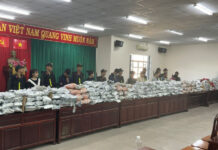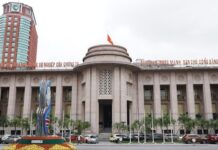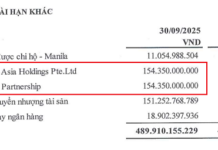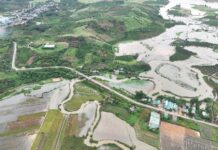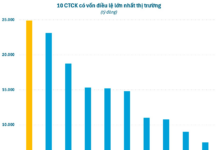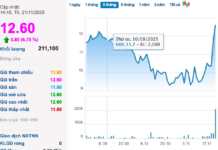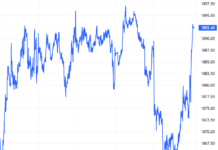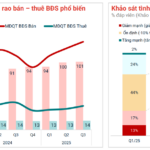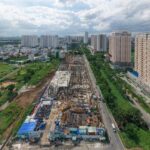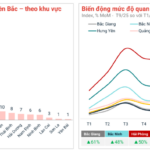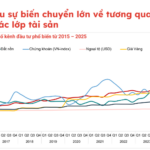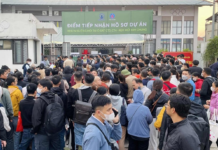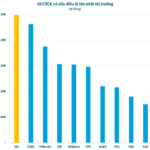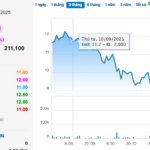Every rainy season, flooding becomes a major concern for residents. Consequently, in the real estate market, flood-free areas are gaining more attention from homebuyers.
Unique Strategies During the Rainy Season
Previously, when buying a home, people often focused on the project’s quality, the developer’s reputation, infrastructure, or price. However, in recent years, buyers are increasingly prioritizing properties located in elevated, flood-resistant areas. The reason is that Hanoi experiences flooding every rainy season, negatively impacting residents’ lives. Therefore, the criterion of “no flooding during rain” has become a crucial factor when purchasing a home.
Ms. Nguyen Thi Mai shared that she bought a house on Dong Thien Street (Vinh Hung Ward, Hanoi). Every time it rains heavily, her alley gets deeply flooded.
“My family has lived here for three years. When we bought the house, we liked its location in a wide alley and its reasonable price, so we quickly made the purchase. However, after living here for about six months, we faced our first rainy season. After every heavy rain, the ground floor of our house would flood. Despite the house’s foundation being 20cm higher than the road, heavy rain would still bring water and waste into the house, damaging many of our belongings,” Ms. Mai said.
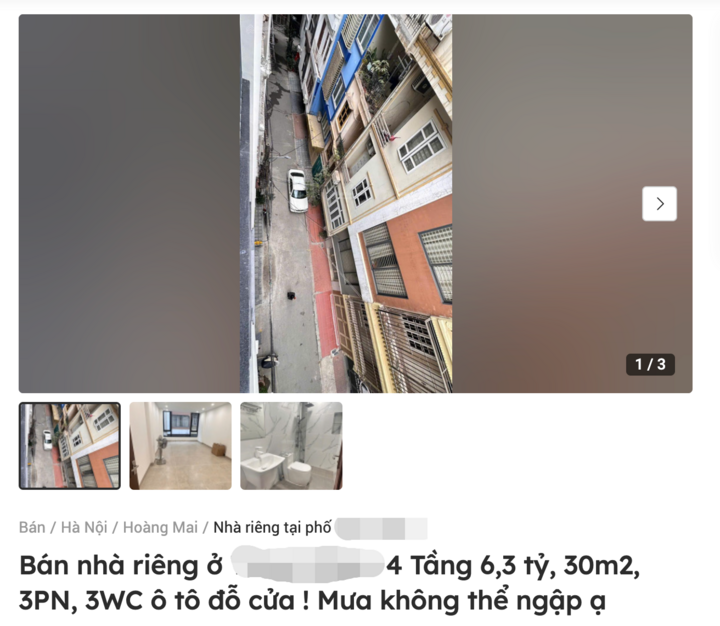
Real estate agents highlight flood-free homes in their listings. (Screenshot)
After each rainfall, her family has to clean the house and belongings, which is very labor-intensive. The worst part is when dirty water contaminates the underground water tank, requiring her to clean it thoroughly. “Every time it rains heavily, I worry about water flooding the house, causing electrical issues and additional cleanup,” Ms. Mai lamented.
Ms. Mai also mentioned that after living there for two years, her family found it too inconvenient and decided to sell the house. When buying a new home, besides location and quality, Ms. Mai and her husband paid special attention to whether the area would flood during the rainy season.
“Before making a deposit, we thoroughly questioned the neighbors and searched online for flood information in the area. We only proceeded with the purchase once we were sure the house was safe during the rainy season,” Ms. Mai explained.
Similarly, Mr. Tran Van Minh listed his house on Vu Trong Phung Street (Hanoi) for sale due to frequent flooding.
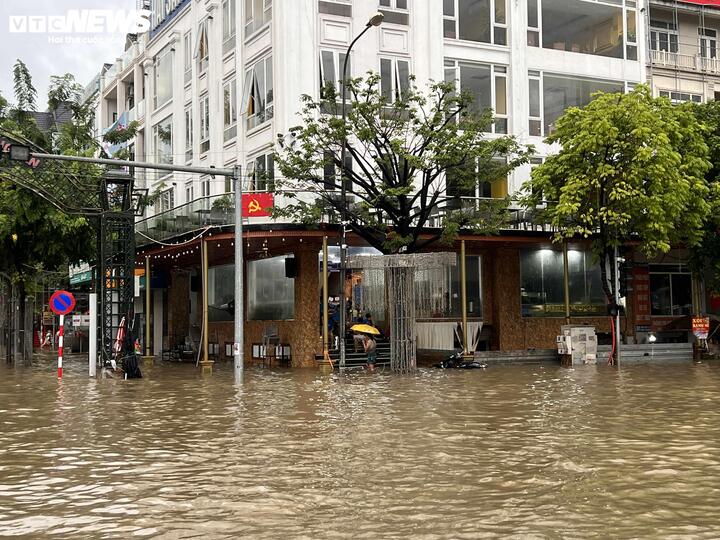
Heavy rains often cause severe flooding in many areas of Hanoi. (Photo: Cong Thanh)
Mr. Minh shared that his house is located in an alley, but the alley is wide, the house is beautiful, and it’s close to a main road, so he quickly bought it. At the time of purchase, he noticed the house’s foundation was 40-50cm higher than the road but didn’t think much of it.
After living there for almost a year, Mr. Minh realized his house was in a heavily flooded area. Although water didn’t enter the house, the road would flood after every heavy rain, making travel extremely difficult. Therefore, Mr. Minh decided to sell the house and move elsewhere.
Understanding this buyer psychology, many real estate agents now include the phrase “No flooding during rain” in their listings during the rainy season.
Mr. Tran Tuan Hai, a real estate agent in Hanoi, shared that during the rainy season, buyers often ask, “Does this area flood?” or “Does this street flood?” Many buyers, even if they like the house, will leave to find another if they learn it’s prone to flooding.
“Recently, heavy rains have caused severe flooding in many areas of Hanoi, with some places taking five days for the water to recede, severely affecting residents’ lives. Therefore, homebuyers tend to avoid deeply flooded areas,” Mr. Hai explained.
According to Mr. Hai, recently, when listing properties for sale, he often includes the phrase “No flooding” to attract buyers and increase the property’s value.
He recounted that after posting such listings, many buyers called him, and the first question they asked was, “Is it really flood-free?” This shows the strong appeal of these properties during the rainy season.
“As real estate agents, besides sales skills, understanding buyer psychology and market trends is crucial. This can increase the visibility of our listings and attract more clients,” Mr. Hai shared.
Flood-Prone Homes Lose Competitiveness
Mr. Dinh Minh Tuan, Director of PropertyGuru Vietnam’s Southern Region, stated that properties in flood-prone areas are at a disadvantage in the market.
Some residents have grown accustomed to living with flooding, but many others consider moving. They seek high-rise apartments or relocate to suburban areas with better infrastructure, smoother roads, and less flooding. This trend is reinforced as major cities like Hanoi and Ho Chi Minh City expand ring roads and transportation networks, allowing residents to move further from the city center.
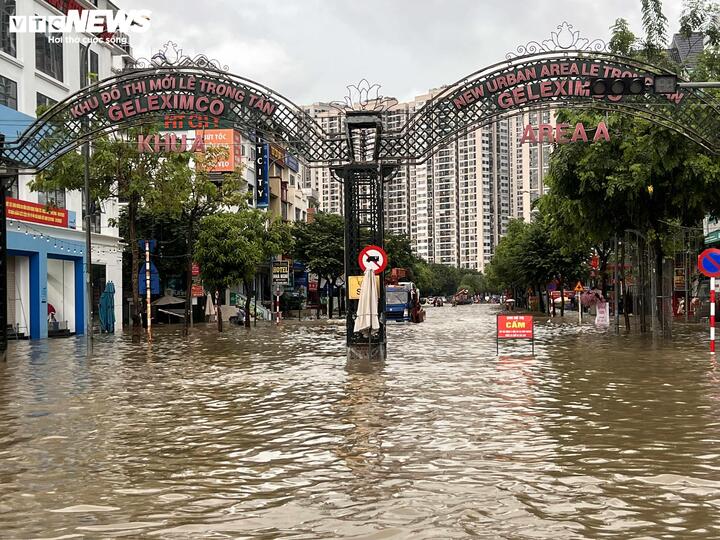
Flooding greatly inconveniences residents’ lives. (Photo: Cong Thanh)
From a market perspective, heavily flooded projects receive negative word-of-mouth and are harder to sell. Conversely, projects with complete infrastructure and good flood resistance have a competitive advantage. This introduces a new criterion for home selection: besides location, price, amenities, and legal aspects, drainage infrastructure is now a key consideration.
“Areas that frequently flood will definitely see slower price increases compared to others. Buyers looking for a place to live will consider moving. If local authorities don’t upgrade infrastructure, real estate in those areas will be less competitive in the long term,” Mr. Tuan emphasized.
Mr. Giang Anh Tuan, Director of Tuan Anh Real Estate, also noted that houses in flood-prone areas are generally cheaper than market prices and attract fewer buyers.
Besides price, feng shui, transportation infrastructure, and living environment, flooding is a primary concern for homebuyers. Purchasing a home in a flood-prone area not only makes travel difficult and affects daily life but also leads to financial losses.
How to Identify Flood-Prone Homes
According to Mr. Tuan, there are several ways to determine if a home is prone to flooding.
First, observe the foundation level of the house compared to its surroundings. If the house’s foundation is significantly higher than the surrounding area, it’s likely in a flood-prone zone. During heavy rain, accessing the house can be challenging due to deep flooding in the surrounding area.
“Most houses with higher foundations are located on streets prone to flooding,” Mr. Tuan emphasized.
Additionally, buyers should inspect the walls of the area they’re considering. If the walls have moss or horizontal water stains at the base, even on dry days, it indicates the water level reached that point during flooding. Buyers should also ask local residents about the extent of flooding in the area.
A real estate company leader also shared that during the rainy season, buyers can clearly see the disadvantages of a property’s location.
To identify potential issues, buyers should note the location, foundation height of the house and road. If the road is higher than the house’s foundation, water is likely to enter the house during heavy rain. If the house is already built and lower than the road, plans should be made to raise the foundation. For apartments, the road leading to the building should also be considered, as a low road with higher surrounding houses can flood the apartment’s entrance during heavy rain.
If neighboring houses are built significantly higher than the road, it’s a sign that the area frequently floods.
Another method is to visit the property during heavy rain to see if the road floods. On dry days, observe the walls for moss or horizontal water stains, which indicate the highest water level during flooding.
Lastly, pay attention to the elevation of the area. During the rainy season and high tides, visiting properties provides a realistic view of the surrounding conditions, allowing buyers to make informed decisions.
National Average Real Estate Price Surpasses 100 Million VND per Square Meter
According to Nguyen Quoc Anh, Deputy General Director of Batdongsan.com.vn, the average property price nationwide has surged from VND 74 million/m² in Q1 2023 to VND 101 million/m² in Q3 2025, marking a 36% increase. Meanwhile, rental prices have remained stagnant during this period.
Emerging Real Estate Hotspots: Hai Phong, Hung Yen, Dong Nai, Da Nang, and Khanh Hoa Take Center Stage
The real estate market in 2025 is witnessing a significant shift: capital is moving away from city centers and flowing into suburban areas. From Hai Phong, Hoa Binh, and Bac Giang in the North to Binh Duong, Dong Nai, and Khanh Hoa in the South, satellite localities are emerging as the new hotspots for both investors and homebuyers alike.
2025 Asset Channel Realignment: Gold, Land, and Condos Take the Lead, Stocks Stabilize, While Savings and USD Yield “Lowlands”
At the “Real Estate Market Overview Q3/2025” event, themed “Leading the Beat,” Mr. Nguyen Quoc Anh, Deputy General Director of Batdongsan.com.vn, shared valuable insights into the current state of the real estate market.




